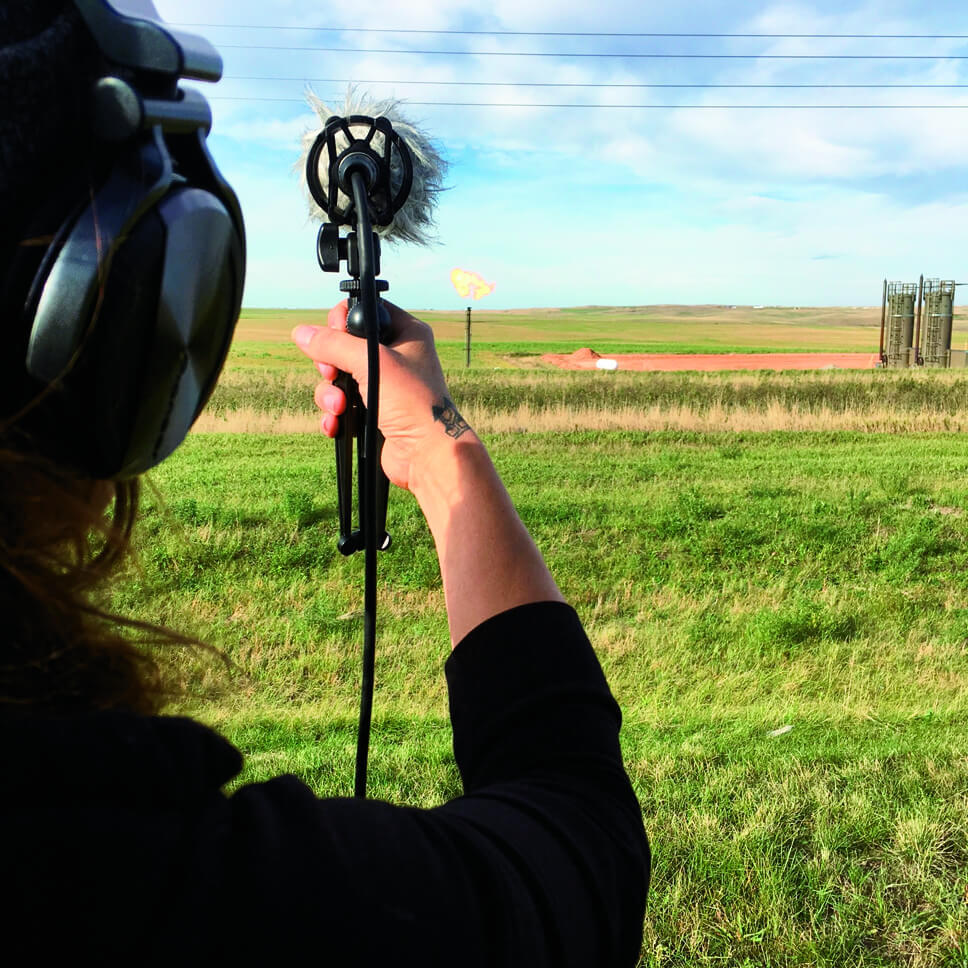Screenings & Art in America Special Issue Launch
October 12, 2017, 7pm
Artists Space
Without Us There Is No You
Artwork reflecting the experiences of Indigenous communities can suggest nuanced strategies for confronting environmental exploitation and the legacies of colonialism. As the visibility of Indigenous art at international exhibitions and museums increases today, Art in America has published a special issue for October 2017 that assesses the magazine's historical coverage of Native American art, examines the role of art institutions in creating spaces for Indigenous culture, and offers critical discussions of the work of both emerging and established Indigenous artists.
In her contribution to the issue, art historian Jessica L. Horton discusses how opponents of the Dakota Access Pipeline use digital technologies and Native storytelling devices to counter yet another United States government violation of their lands and culture. She demonstrates how video and new media works by Native artists made over the last year about the crisis at Standing Rock are part of an enduring tradition of activism and creative response. To mark the launch of this special issue of Art in America, Maria Hupfield and Jason Lujan, two artists who run the curatorial collective Native Art Department International, screen a selection of recent works and discuss them with Horton.
Work screened by Ginger Dunnill, Dylan McLaughlin, Cannupa Hanska Luger (founding members of Winter Count Collective); Indigenous Rising Media (Jade Begay); Caroline Monnet; Sterlin Harjo; Sky Hopinka and Sm Loodm 'Nüüsm (Dr. Mique'l Dangeli) and Tim-kyo'o'hl Hayats'kw (Nick Dangeli).
Maria Hupfield (born in Parry Sound, Ontario, Canada) is Anishinaabe from Wasauksing First Nation, Ontario, and lives in Brooklyn, NY. Her recent solo exhibit The One Who Keeps on Giving is a production of The Power Plant Contemporary Art Gallery, Toronto in partnership with Southern Alberta Art Gallery, Lethbridge; Galerie de l’UQAM, Montréal; Mount Saint Vincent University Art Gallery, Halifax; and Canadian Cultural Centre, Paris. Her work toured with Beat Nation: Aboriginal Art and Hip Hop and was selected for SITELines Biennial SITE Santa Fe 2016. She is a current BRIC Workspace resident and one of four artists setting up a temporary studio in the gallery for Studio Views: Craft in the Expanded Field, at the Museum of Arts and Design in New York, 2017. Hupfield is an advocate of Native community arts, feminisms and activism; Founder of 7th Generation Image Makers, Native Child and Family Services of Toronto, a Native youth arts and mural outreach program in downtown Toronto and Co-owner Native Art Department International, New York.
Jason Lujan is originally from Marfa, Texas and has lived in New York City since 2001. His multi-disciplinary work invests contemporary American Indian and Mestizo culture with an international sense of place, often utilizing visual signifiers rooted in Asia. Previous exhibitions and performances include the Heard Museum, Phoenix, AZ; International Print Center, New York, NY; the National Museum of the American Indian, New York, NY; Smithsonian Arts & Industries Building, Washington DC; the Curibita Biennial in Brazil; Continental de Artes Indígenas Contemporáneas at the Museo Nacional de Culturas Populares, Mexico City, and solo installation, Summer Burial, at the Museum of Contemporary Native Art in Santa Fe. He is co-owner of Native Art Department International, and occasionally curates and co-organizes exhibitions in New York City. He is a board chair with the downtown arts non-profit ABC No Rio.
Jessica L. Horton is assistant professor of modern and contemporary art at the University of Delaware. She is the author of the book, Art for an Undivided Earth: The American Indian Movement Generation (Duke University Press, 2017), which is supported by a Wyeth Foundation Publication Grant and the Andrew W. Mellon First Book Initiative. Her essays about globalization, space, materiality, ecology, and Indigenous politics have appeared in publications such as Art Journal, Art History, American Art, Third Text, and The Journal of Transnational American Studies. She has held fellowships at the Getty Research Institute, the Smithsonian Institution, the Center for Advanced Study in the Visual Arts, and the Terra Foundation for American Art, among others.
